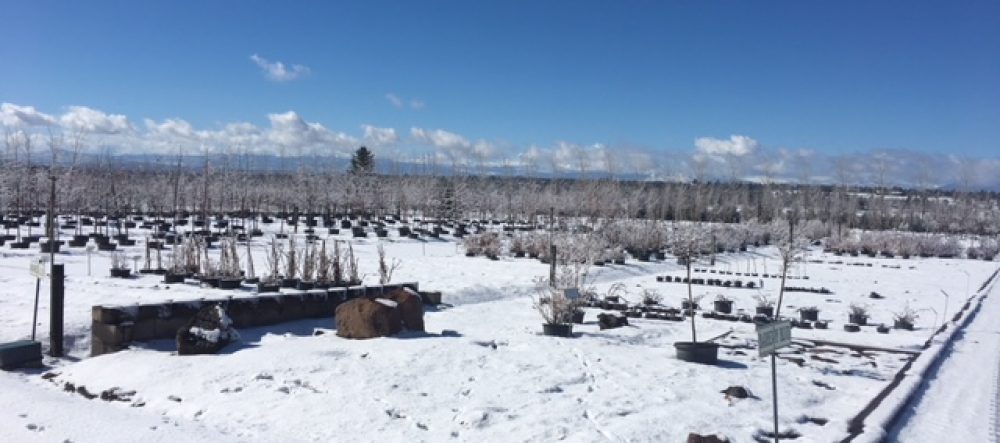Pruning is recommended at the end of the dormant season, just as growth begins. This is a good time to prune late-flowering shrubs that bloom on wood produced the same year before growth starts. Prune shrubs that bloom in spring after they flower. Rhododendrons should be deadheaded after the flowers bloom. Conifers/evergreens require specific pinching and pruning, do not prune in spring or summer when the sap is flowing. Remove any broken, disease, or weak branches off mature fruit trees in summer.
Deadheading: Removing the spent blossoms of flowering plants to encourage continued blooming. Also gives a neater look.
Heading Back: Cutting back the main branches of a tree or shrub by at least half their length. This method stimulates new growth.
Limbing Up: Removing the lower branches of mature trees.
Pinching: Removing the growing tip of a plant to encourage the formation of bushy growth and improved blooming.
Pollarding: Specialized form of pruning to develop a formal shape or restrict the crown of a mature tree.
Thinning Out: Removing entire branches flush with the trunk or with a lateral branch. This method does not stimulate new growth.
Shearing: A smooth cut across a flat plane-as with a hedge-to stimulate bushy growth.
Pruning of Fruit Trees:
http://www.davewilson.com/home-garden/faq/question/how-prune-fruit-tree/








